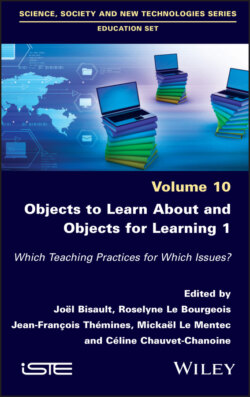Читать книгу Objects to Learn about and Objects for Learning 1 - Группа авторов - Страница 22
I.1.3. Objects of the school environment
ОглавлениеThe preoccupation with the “material culture” of school is defined by Julien and Rosselin (2005, p. 5) in its Anglophone meaning, according to which it looks at “objects as specimens of culture (hence the term Material Culture) and which differs from the position of French anthropologists who are more interested in the technical gestures that support the manufacture and manipulation (hence the preference for a ‘cultural technology’)”. These authors underline the fact that in the two traditions, the culture is anchored very firmly in the material. They suggest that this anchoring in the material relates to symbolic, political or religious fields. They then explain that “the porch, stoup, baptismal font, missal, pew, altar, crucifix, rosary, confessional, candle, host are objects of Catholicism without which practices and beliefs would be lacking in resources”. These authors go on to suggest that “the French tradition follows the thinking that pens, lecture halls, benches, do more than reveal student culture (which boils down to much more than academic life); the school subject [in the sense of academic discipline] is not merely a symbol of their belonging to this culture. In their gestures with the objects, students construct themselves as students and, in doing so, help to forge a specific culture” (ibid.).
With this anthropological perspective, all school objects are objects for learning about the pupil role, the school environment’s code of practice, the ways of doing, saying and thinking about teaching–learning, the appropriate stance for each subject, teaching materials and their functions, from the printout to be filled out in line with ritualized rules to implementing the interactive whiteboard in accordance with the dialogue teaching method but without actually asking oneself questions about the operation of this hi-tech object. However, these material cultures should be thought of in the plural according to the distinction between the segments and the contrasting school and university paths in general, technological and vocational education. These differences lie at the often unspoken root of the construction of educational inequalities when the boundaries between school and out of school are crossed with no warning of the change in spaces for socialization and the register of uses of peripatetic objects from the home, school or extracurricular spheres, for instance museums (Netter 2018). The same is true for children’s documentaries which, introduced into the classroom, may sometimes be aimed at questioning, imagining technical solutions or even assessing language proficiency levels.
This first point about the material culture and hence socio-cultural and commercial products such as teaching resources involves the frequent nuance between didactic function (linked to content) and pedagogical function (without specified content) (Bédard et al. 20067). This point opens the way to the second part of this introductory text which deals with the uses and teaching practices of the objects to be learned by seeking to propose a problematization.
